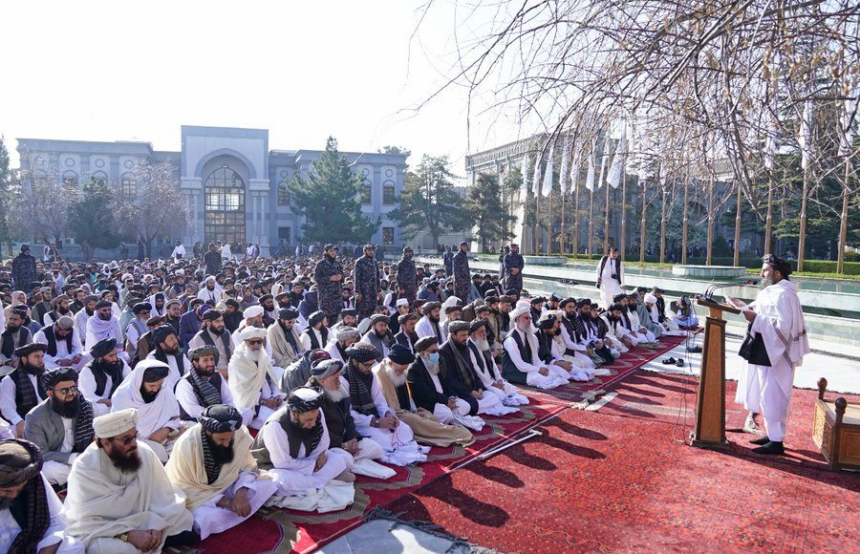RASC News Agency: Mullah Abdul Kabir, the acting Minister of Refugees for the Taliban, conducted Eid prayers separately at the Sepidar Palace, while other senior Taliban leaders attended the ceremony at the Presidential Palace. The decision to hold Eid al-Fitr prayers at two distinct locations underscores the growing internal complexities and factional divisions within the Taliban. This event has drawn significant attention to the group’s internal dynamics and the ongoing power struggles within its leadership.
At the Presidential Palace, where the central authority of the Taliban is now established, key figures including the economic and administrative deputy and the chief of staff of the prime minister’s office were present, signaling cohesion among the upper echelons of the group. Conversely, the separate prayer gathering at Sepidar Palace, which historically symbolized power-sharing in the previous government, suggests an attempt to assert an independent political stance within the Taliban’s structure. The fact that Mullah Abdul Kabir continues to operate from Sepidar Palace, despite his appointment as Minister of Refugees, highlights potential dissatisfaction and reluctance to fully integrate into his new role.
Before the Taliban’s takeover, Sepidar Palace served as a power-sharing hub between former President Ashraf Ghani and his political rival Abdullah Abdullah. Now, it has become a focal point for internal power struggles within the Taliban. Mullah Abdul Kabir, previously known for his role in military organization and refugee affairs, appears to be maneuvering to secure a stronger foothold within the Taliban’s executive structure. These developments may signal deeper internal fractures within the Taliban and managerial disputes among its leadership. The simultaneous Eid prayer ceremonies at two separate venues evoke historical parallels to Afghanistan’s previous government, where deep-seated political divisions led both Ashraf Ghani and Abdullah Abdullah to claim victory in the presidential elections and hold separate inauguration ceremonies.
Speculation about the Taliban’s internal divisions continues to mount, with analysts suggesting that these disputes could escalate into more profound crises. Some factions within the Taliban have begun openly distinguishing themselves, seeking to consolidate power independently, potentially setting the stage for increased political rivalry in the near future. Ultimately, this episode and the visible division in the Eid celebrations may serve as a symbolic representation of deeper fractures within the Taliban, which cannot be ignored. These internal conflicts could significantly impact the group’s governance in Afghanistan and influence its approach to handling domestic and international challenges.






